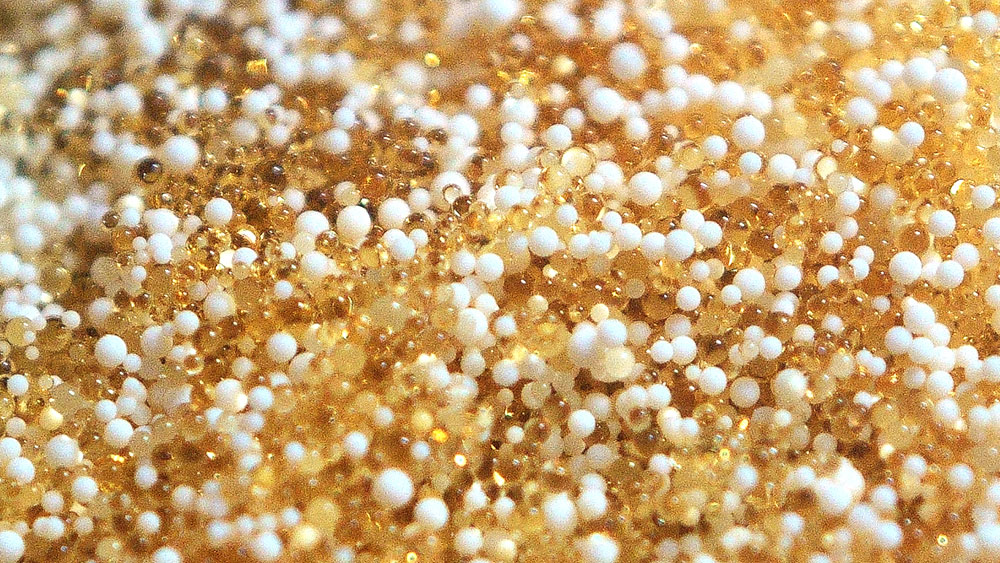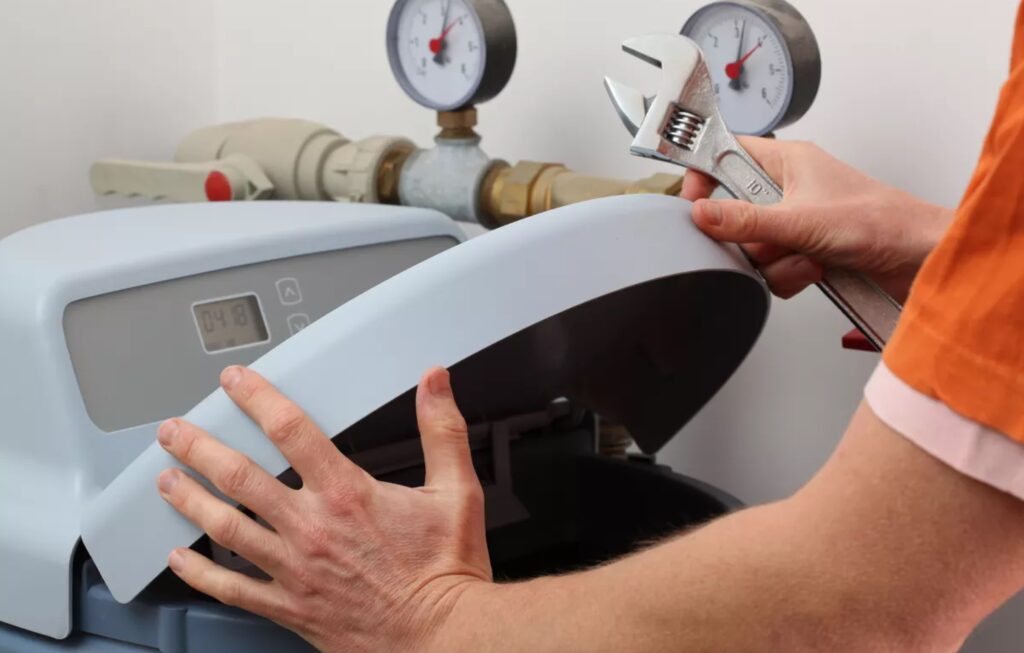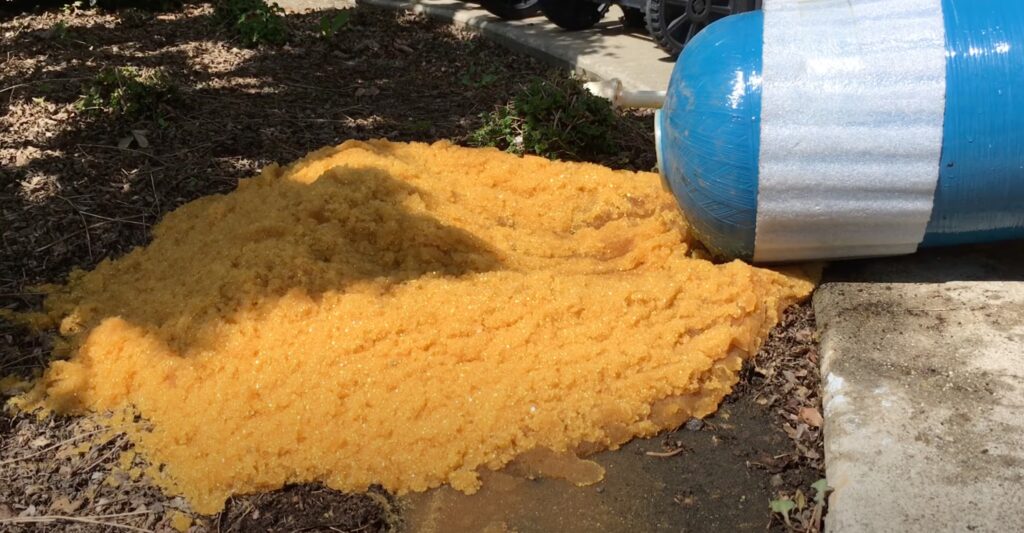Home » Knowledges » Water Softener Resin 101: Everything You Need to Know for Optimal Performance

Water is crucial to our daily activities, including drinking, cooking, cleaning, and bathing. Yet, hard water can present a number of problems for households, including diminished soap and detergent efficacy, damage to plumbing systems, and a limited lifespan for appliances. Water softening, which can dramatically enhance the quality of your home’s water, is one answer to these problems. The unsung hero responsible for changing hard water into soft water is water softener resin, which is vital to this process.
This article, “Water Softener Resin 101: Everything You Need to Know for Optimum Performance,” aims to provide a comprehensive overview of the function and significance of water softener resin. At the conclusion of this article, you will have a thorough understanding of the available resin kinds, how they function, and how to select, manage, and troubleshoot your water softener resin for best efficiency. You can make well-informed decisions and enjoy all the benefits of soft water in your house if you have the correct information at your fingertips.
The removal of hardness-causing minerals like calcium and magnesium ions from water is accomplished through the use of water softener resin, an essential part of the water softening process. Let’s take a closer look at the cation exchange resin, the type of resin used in water softening, to learn more about its traits and characteristics and how it works.

Polystyrene and divinylbenzene are the main components of cation exchange resin, which consists of tiny porous beads. (DVB). Because of the sodium or potassium ions embedded in the beads, they are able to attract and bind to the ions that contribute to water hardness. Water is softened as it flows through a resin bed, where calcium and magnesium ions are replaced by sodium and potassium ions.
Weak acid cation (WAC) exchange resin and strong acid cation (SAC) exchange resin are the two most common forms of cation exchange resin.
Hard water travels over a bed of resin beads in the water softener’s resin tank, where the ion exchange process occurs. Calcium and magnesium ions, which are positively charged, are drawn to the negatively charged resin beads as water flows through. The sodium or potassium ions bound to the beads are simultaneously released into the water, completing the exchange. The end product is water that has had the minerals that make it hard removed.
The amount of ion hardness a resin can remove before it becomes saturated and needs renewal is known as its ion exchange capacity. This capacity is typically reported in gpg or mg/L, where gpg stands for grains per gallon and mg/L for milligrammes per litre. Your water softener’s optimal settings and the frequency of its regeneration depend on your knowledge of the ion exchange capacity of its resin and your water’s hardness.
If you want your water softening system to work efficiently and last as long as possible, you need to choose the right resin. The correct resin will remove the minerals that cause hardness while minimizing maintenance requirements. Some things to think about while picking the right water softener resin for your household are:

Knowing the hardness level of your water source is crucial before choosing a resin. A water hardness test kit or a water quality report from your water company will tell you this. Hardness, measured in grains per gallon (gpg) or milligrammes per litre (mg/L), is one way to figure out how much ion exchange capacity your resin will need.
Some water supplies may also contain iron and manganese, which can contribute to water hardness and produce discoloration or scale building in addition to calcium and magnesium. If iron and manganese are present in your water source, you should select a resin that can remove those metals.
How often you regenerate your water softener’s resin is a major factor in how long that resin will last and how effective your system will be overall. If you’re looking to save time, money, and energy, picking a resin with a higher ion exchange capacity is a good place to start.
Use only water softener resins that are compatible with your system. Make sure the resin you buy will work in your water softener. Strong acid cation (SAC) exchange resin is commonly used in water softeners, but you should check with the manufacturer or user handbook to be sure.
From Felite Resin Technology, is a high-quality 8% crosslinked SAC exchange resin that can be used in domestic, commercial, and industrial water softening systems. Felite FC108 is widely used since it is both efficient at softening water and compatible with a wide variety of systems.
This high-capacity SAC exchange resin is ideal for industrial and institutional water softening systems. Physically and chemically stable, it efficiently gets rid of minerals that cause hardness.
A high-capacity SAC exchange resin from Dow Chemical, with excellent performance in a variety of water softening systems.
Water softening systems in homes, businesses, and factories can all benefit from using ResinTech CG8, a high-quality SAC exchange resin that is crosslinked at a rate of 8%. Durability and fouling resistance are hallmarks of ResinTech CG8.
High-capacity SAC exchange resin Aldex C-800 is highly effective in removing ions that contribute to hardness. Residential, commercial, and industrial water softening systems can all benefit from using Aldex C-800.
You may select the best water softener resin for your needs by thinking about the aforementioned variables and learning about trusted manufacturers and products.
If you want your water softener to last as long as possible and function at peak efficiency, you need to set it up correctly. Instructions and recommendations for installing and configuring water softener resin and equipment are provided below.

Make sure the water and power have been turned off to the water softener before beginning installation. Remove the top and make sure there is no residual water in the resin tank. Replace the distribution tube if it is damaged and make the tank levelling. Gravel or garnet can be used to fortify the tank and promote more uniform water distribution. (if your system calls for it). To completely wrap the distribution tube, place it in the tank and slowly pour in the resin beads. The manufacturer’s recommended resin volume for the tank should be used. The tank cover has to be re-installed and secured.
To flush the system, slowly activate the water supply to displace any trapped air and resin particulates. The water should be redirected to an appropriate drain and allowed to run until it is completely clear.
Recharge the resin with sodium or potassium ions by initiating a manual regeneration cycle. Start the regeneration process by following the directions in the user handbook.
Determine the hardness of your water source and enter that number into your water softener’s settings. You can ask your water provider or use a home test kit to determine the hardness of your water.
Resin ion exchange capability and water hardness will determine how often the system needs to be regenerated. A higher ion exchange capacity resin may require less frequent regeneration.
If you want to avoid disrupting your water supply too much, schedule regeneration for times of low water demand, such the middle of the night.
Regularly inspect the system for leakage and other damage. Check the salt and potassium levels in the brine reservoir and replenish them as necessary. Regularly clean the brine reservoir and inspect the system’s components for signs of wear and damage, per the manufacturer’s instructions. Following these installation and configuration instructions will ensure that your water softener system functions properly, providing you with a constant supply of softened water for your home or business.
The effectiveness and lifespan of your water softening system are directly tied to how well you care for the resin inside. Resin fouling, diminished ion exchange capability, and system failures are all avoidable with routine maintenance. In order to get the most out of your water softener resin and system, follow these maintenance guidelines:

Inspect the resin tank on a regular basis to make sure it is not leaking, broken, or clogged. Fix problems as soon as possible to avoid future troubles or complete system failure.
The ion exchange capability of the resin bed can degrade over time due to the accumulation of iron, manganese, and other contaminants. Maintaining a water softener’s peak function requires routine cleaning with a resin cleaner made for such systems. To ensure optimal results, use the cleanser as directed and as often as recommended by your system’s user manual.
Keep an eye on the salt level. Regularly check the brine tank and replenish as needed. Ensure that the salt is high-quality and appropriate for your specific system to prevent issues such as bridging or salt mushing.
The formation of salt bridges in the brine tank will impair regeneration and resin efficiency. The salt in the tank should be in direct contact with the water, therefore use a tool with a long handle to break up any salt bridges that have formed.
Regularly review your system’s regeneration frequency and adjust it based on changes in water usage or water hardness levels. This will ensure optimal performance and prevent unnecessary strain on the resin.
Inspect and replace any worn or damaged components, such as o-rings, valves, or seals, as needed. This will help maintain the efficiency of your system and prevent leaks or malfunctions.
In addition to regular self-maintenance, schedule a professional inspection and servicing of your water softener system at least once a year. A professional technician can identify and address potential issues early, ensuring the longevity of your system.
By following these maintenance advices, one can ensure optimal performance and efficiency of the water softener resin and system, thereby ensuring a dependable provision of softened water for residential or commercial purposes. Performing routine maintenance on your water softener system can increase its longevity, resulting in cost and resource savings over time.
There can be environmental benefits and drawbacks associated with the use of resin in water softening systems. Knowing these effects is crucial for avoiding unnecessary harm to the environment while deciding how to treat water. The effects of water softener resin on the environment are discussed here.

Appliances like water heaters, dishwashers, and washing machines can save money and energy by using softened water. Because they need less energy to run, these appliances help the environment by lowering carbon dioxide emissions and other forms of pollution caused by scaling.
Because scale accumulation and corrosion are prevented by water softening, the useful life of appliances and plumbing systems is lengthened. Because of this, fewer resources will be wasted, and more will be saved, because repairs and replacements will be needed less frequently.
Traditional water softeners that employ sodium chloride (salt) for regeneration can add to the problem of salt pollution by increasing the concentration of sodium in wastewater. This can have an adverse effect on aquatic habitats and create difficulties for water treatment plants in their efforts to remove salt from the water supply. The use of potassium chloride is another option, although it is typically more expensive and may have adverse effects on the environment as well.
Water softening systems necessitate the use of water during the regeneration process, which may increase water usage. This additional water use can strain municipal systems in regions where water scarcity is already an issue.
In order to lessen their negative effects on the environment, homeowners should invest in high-efficiency water softeners. In addition to tracking water consumption, these systems may tweak regeneration intervals to save water and energy.
Template-assisted crystallisation (TAC) and electronic descaling are two examples of salt-free water conditioning technologies that don’t add to salt pollution and don’t necessitate any extra water for regeneration; they should be given serious consideration. These systems may not be as efficient as conventional ion exchange systems at removing hardness-causing minerals from water.
Maintaining your water softener and adjusting the settings to your needs will cut down on salt and water use without sacrificing functionality. Always use high-quality salt or potassium chloride for the regeneration process, and make sure to check your system often.
Water softener resins are critical components of the ion exchange process, which efficiently removes hardness from your water supply. Understanding the many types of resins, their applications, and how to correctly install, operate, and troubleshoot your water softening system will ensure that your water softener system performs optimally and lasts as long as possible.